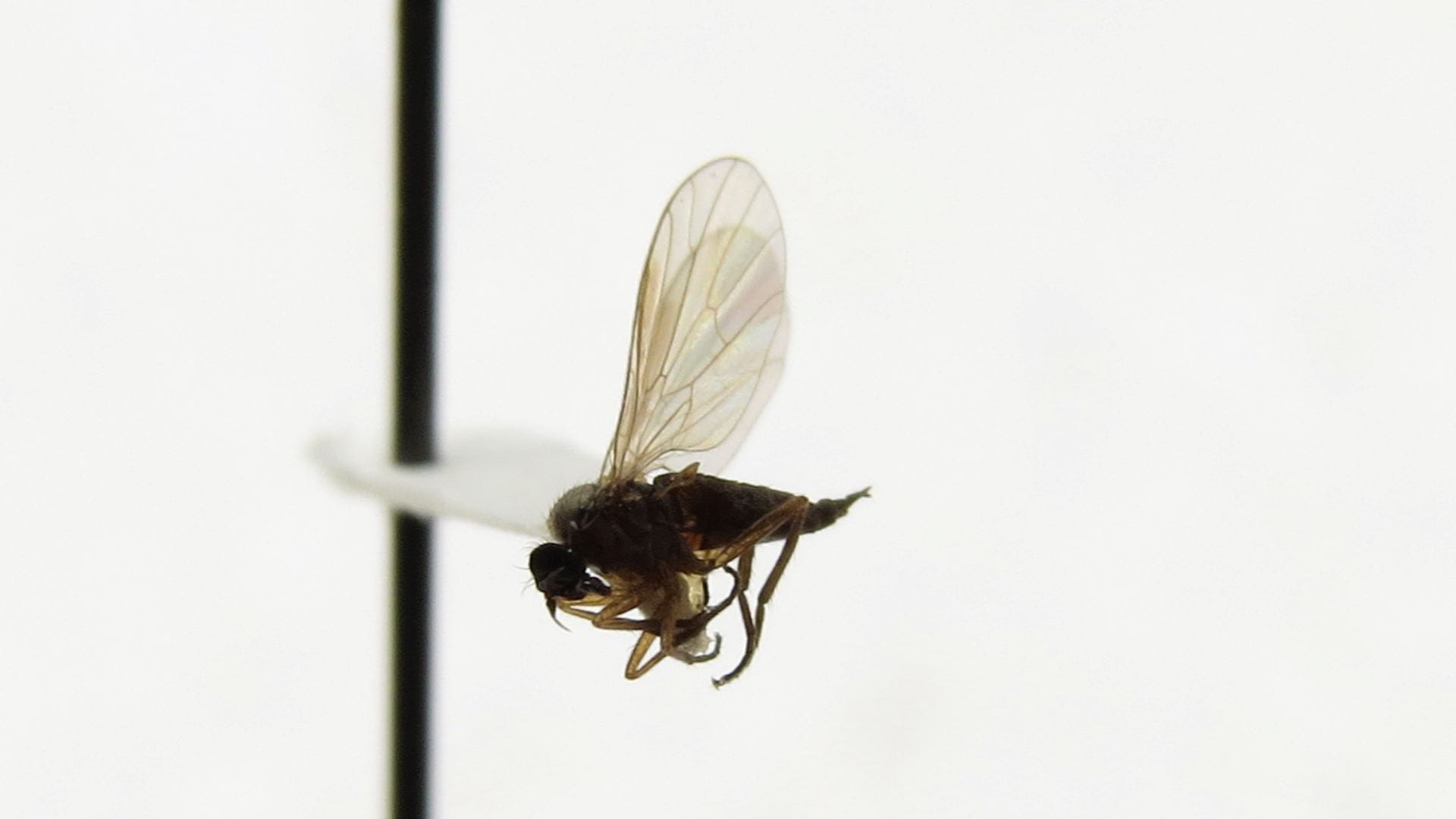“Truth in advertising. We have had fungus gnats in the IPM house” – NYSIPM staffer

Just because we spend our working hours thinking, researching, and educating about pests does not mean we don’t sometimes have issues too. We decided a presentation on fungus gnats could help other NYers as well.
On Friday, February 4, Dr. Betsy Lamb discussed fungus gnats and a few additional indoor fly pests associated with houseplants during our What’s Bugging You? First Friday Events. From the comments, fungus gnat infestations are very common.
While the most common reason we have fungus gnats is overwatered plants, there are other reasons. You can find them on our What’s Bugging You? page dedicated to fungus gnats.
So what are we to do?
The first step is identification. Sticky traps can help capture adults, making it easier to check them out under a microscope. (If you don’t have one, most county Cornell Cooperative Extension offices offer identification services or you can take advantage of the Cornell University Insect Diagnostic Laboratory identification services.

You can also put slices of potato (approx. 1 sq. in.) far enough into the soil surface to cover the cut edges. If larvae are present, they should be found feeding on the underside after a few days.
Unfortunately, neither of these monitoring techniques will control your problem, so…
Reduce habitat

Fungus gnats thrive in the top section of damp soil, so do your best to keep the top two inches dry. Try using a large funnel that feeds water directly into the soil or adding water to the bottom of the saucer. Adding an one inch layer of sand to the soil surface will help to keep it dry.
Check out Betsy’s presentation, “Fungus gnats and indoor plants – A match made in heaven?” for more information, including biocontrol options.
For more integrated pest management strategies, visit the Fungus Gnats page on our What’s Bugging You? website.
